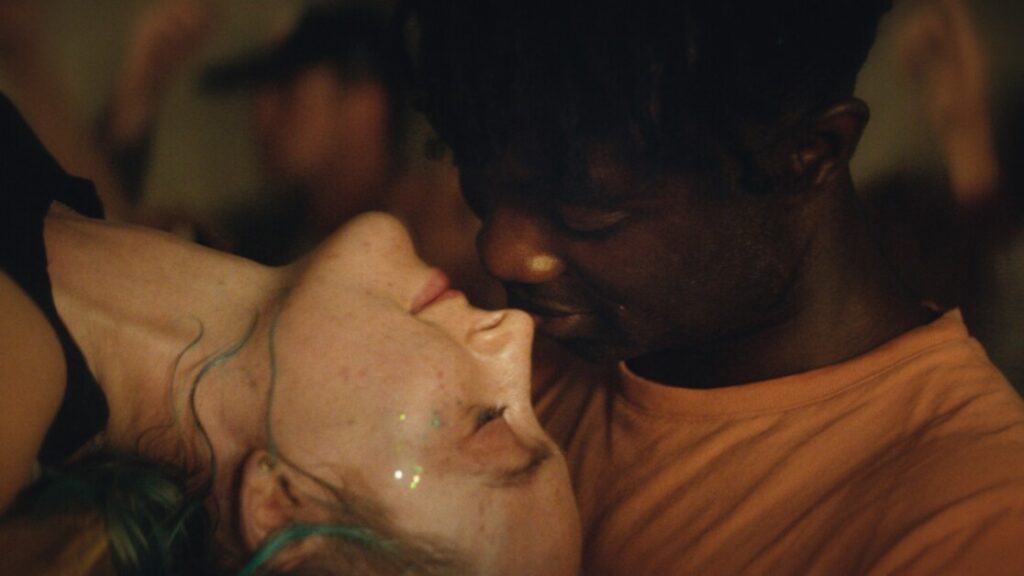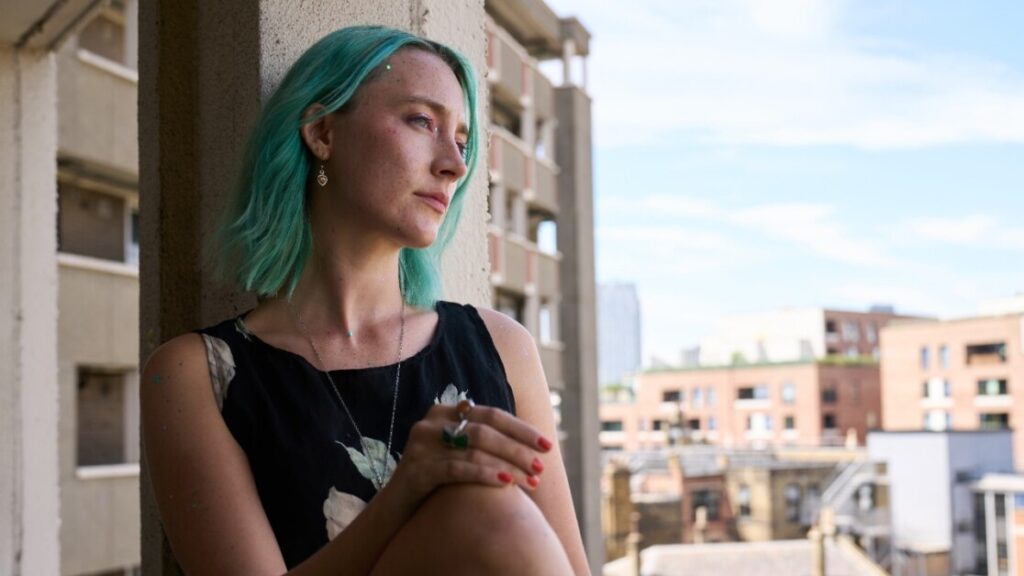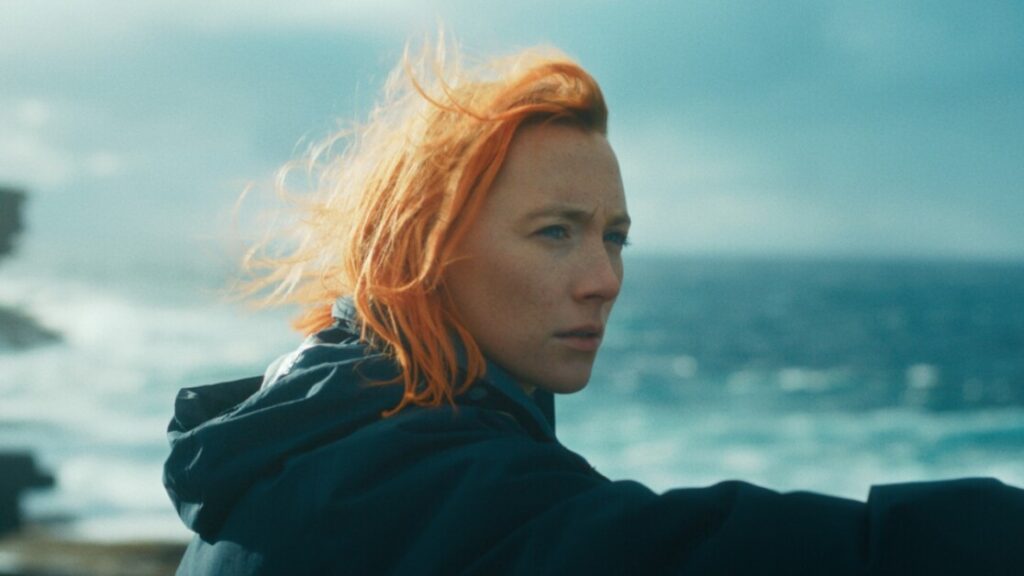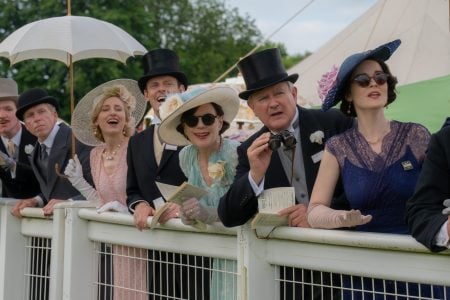Addiction has been brought to the big and small screen many times, resulting in beautiful and heartbreaking works and cliched and been-there-done-that storylines. The latest movie about addiction—particularly alcohol—is Nora Fingscheidt’s The Outrun. While the feature is as sombre and mesmerising as its predecessors, it is way less cliched.
Avoiding the clichés of an addiction movie and a memoir adaptation – the film is based on Amy Liptrot’s 2017 best-selling memoir – isn’t easy. Still, Fingscheidt and co-writers Amy Liptrot and Daisy Lewis have done it tremendously. This is because the team behind this feature isn’t afraid to push the boundaries of the narrative, visuals and the performances they can count on.
Just like in her previous movies, System Crashers and The Unforgivable, the director explores again the scarred mind of a young female in a very visceral and sensitive way. This time, it’s the psyche of Rona (Saoirse Ronan), a thirty-year-old woman whose life has been determined by alcohol addiction, the troubled relationship between her bipolar father (Stephen Dillane) and her soft-spoken mother (Saskia Reeves), and the unattachment with others. To finally face her addiction, the devastating blackouts, and the agonising hangovers head-on, Rona decides to return to her hometown, Orkney, an archipelago of approximately seventy islands in the North/Northwest of Scotland.

From the moment Rona leaves busy London for the isolated island, you see Fingscheidt’s creativity and flair for anything visual coming through the most. The mind of someone is a complex thing that becomes even more complex and chaotic when a substance is involved. The duality between a calm and confused mind and between being sober and drunk is depicted in so many beautiful and, most of the time, nuanced ways.
The story taking place in both Scotland and London (via flashbacks) doesn’t only symbolise the calmness and the messiness of Rona’s mind but also the feelings of isolation and withdrawal. Those aspects are part of the battle with addiction, and it doesn’t matter where Rona goes; they’re always part of her, too. When she moves to Orkney, Rona’s physically isolated from the alcohol and the temptations of London, and when she’s in London, she’s isolated from the people around her and her own life because of the bottle.
In one scene, you get to see the seals living near the grey and dull coast – which represent both Rona’s interest in biology and wildlife as well as her calm mind during the few sober and ‘unhappy’ moments – while the next, you find her in one of the busiest clubs in London when being on the verge of collapsing due to the alcohol.
We also have to congratulate the sound design team behind this feature, as they themselves beautifully contribute to bringing the duality between all those aspects (drunk/sober, city/nature, etc.) to life. They use vibrant and upbeat music when Rona is in London to accompany her busy state of mind, while the nature sounds guide Rona through a much more tranquil time.
The first hour of this feature truly depicts the psychological fragmentation by using different audio-visual aspects and the various locations. While those elements are still present in the latter part of the feature, the second half focuses much more on Rona herself, her emotions and the people around her who are affected by the alcohol abuse. From then onwards, the spectacular Ronan (Ammonite, See How They Run) takes over from the dynamic visuals. She truly puts herself through the wringer – both emotionally and physically – as she’s mesmerizing as the young woman, who, after her self-destructive journey, hits rock bottom but who also wants to put her ultra-fragmented life back together.

It’s not only Ronan’s marvellous performance that shows you how Rona feels when she’s experiencing one of her bipolar episodes but also her character’s look, particularly her hair. Her hair is bright aqua when she’s in full-on party mode and incapable of putting the bottle down. However, once Rona tries to find the tranquillity of the seaside to leave the party and drinking days behind, the colour of her hair is dialled down enormously with only the tips being coloured. Again, this is a prime example of how Fingscheid knows how to tremendously, yet subtly integrate more clues about the character’s feelings, reeling mind and intrusive thoughts.
While not all of the graphics work equally well – the extra layer of animation feels a bit too over-the-top—those distinctive, impressive, and beautifully crafted visuals and Ronan’s magnetic lead performance set the compelling The Outrun apart from other similar features.
The Outrun opens the Edinburgh International Film Festival 2024 on the 15th of August. The movie will be released in the UK on the 27th of September courtesy of Studiocanal and in the US on the 4th of October courtesy of Sony Pictures Classics.
The Outrun is a visually mesmerizing and grippingly performed movie about the complexity of addiction led by a magnetic Saoirse Ronan.
-
GVN Rating 8
-
User Ratings (0 Votes)
0






![‘Swiped’ Review – A Sharp Biopic On Whitney Wolfe Herd And Sexism In Tech [TIFF 2025] ‘Swiped’ Review – A Sharp Biopic On Whitney Wolfe Herd And Sexism In Tech [TIFF 2025]](https://cdn.geekvibesnation.com/wp-media-folder-geek-vibes-nation/wp-content/uploads/2025/09/g_20cs_swiped_still_1_e58fe01b-300x168.jpeg)
